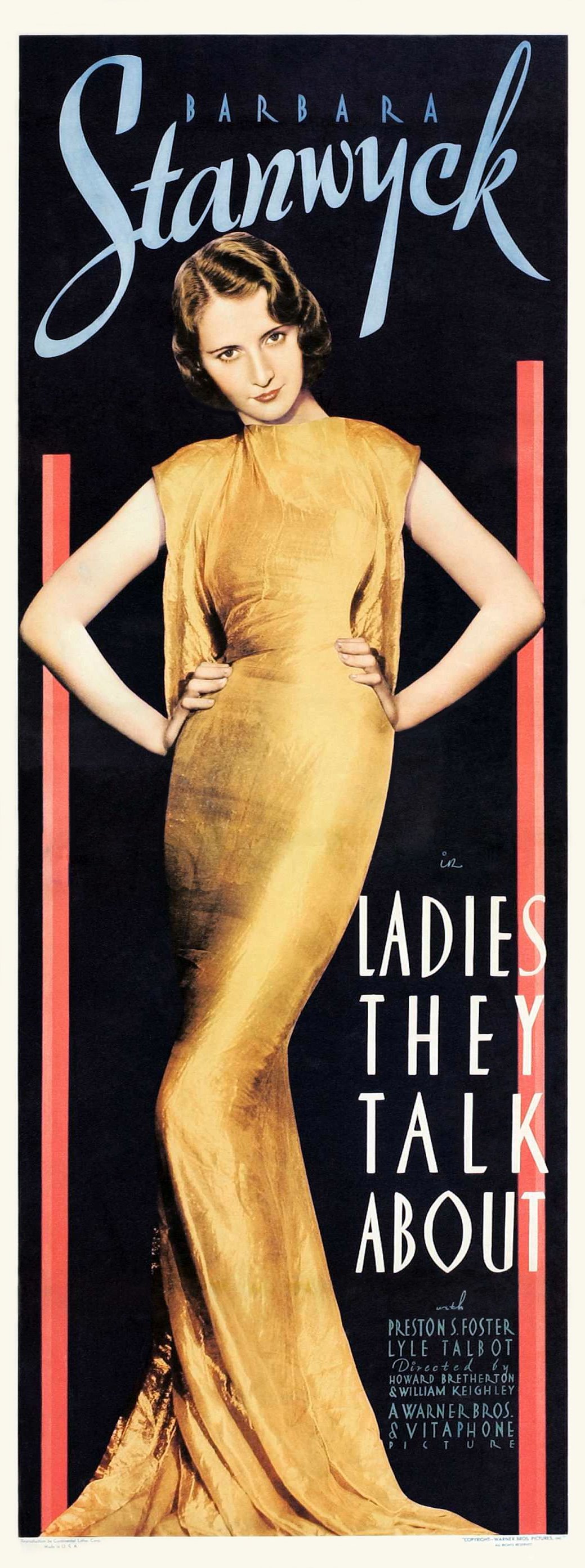Ladies They Talk About
Who knew prison was this much fun? On a typical night in the women’s ward at San Quentin, a society dame who put ground glass in a rival’s soup cuddles her Pekingese; a madam reminisces about the “beauty parlor” she used to run; and a creepy religious fanatic dons black lingerie to listen to her idol, a radio evangelist. Meanwhile, the bubbly Lillian Roth croons, “If I Could Be With You” to a photo of…Joe E. Brown, and a cigar-smoking lesbian (“Watch out for her, she likes to wrestle,” a new inmate is warned) does weight-lifting exercises. This is less a jail than a clubhouse for deviant gals. Remorse? Repentance? Don’t make them laugh.
Especially not Barbara Stanwyck, a glamorous bank robber doing two to five for her role in a heist. Sardonic, jaded and immune to sentiment, she saunters around the hoosegow chewing gum and handing out stinging put-downs. A straight-arrow reformer (the object of the religious fanatic’s crush, and the human equivalent of a bowl of tapioca pudding) falls hard for Stanwyck and pursues her adoringly—even after she shoots him in the arm. This pairing of a bad girl and a virtuous male redeemer is a welcome reversal of the usual trope. The greatest gulf between pre-Code and film noir is that the former is so tolerant, and the latter so punitive toward women who break the rules. Like defense attorneys, these movies argue that the ladies’ circumstances should be taken into account: the toughness of their world, their limited options. And from the witness stand they use everything they’ve got: anger, tears, wisecracks and killer gams. What jury would find them guilty?
by Imogen Sara Smith

